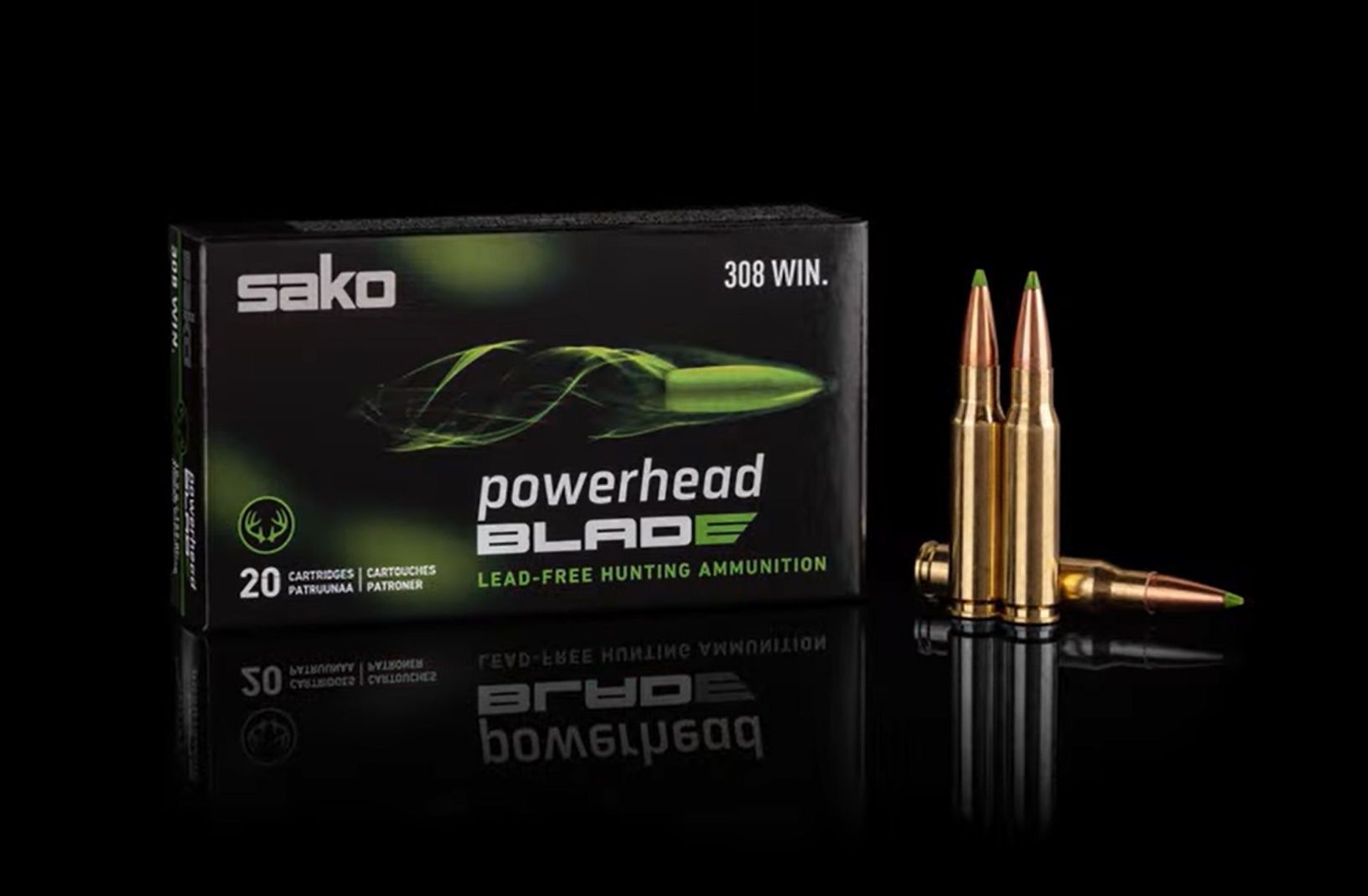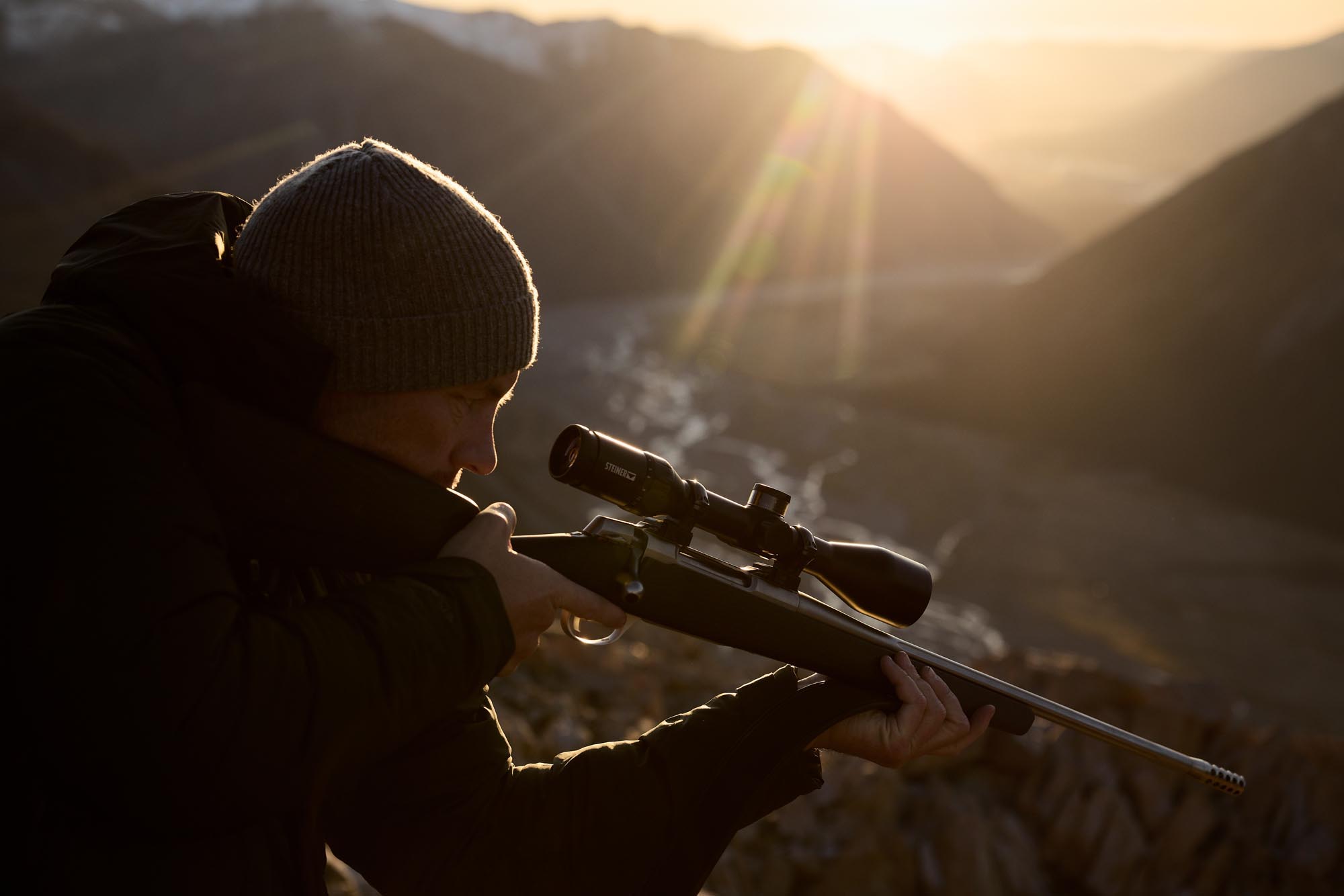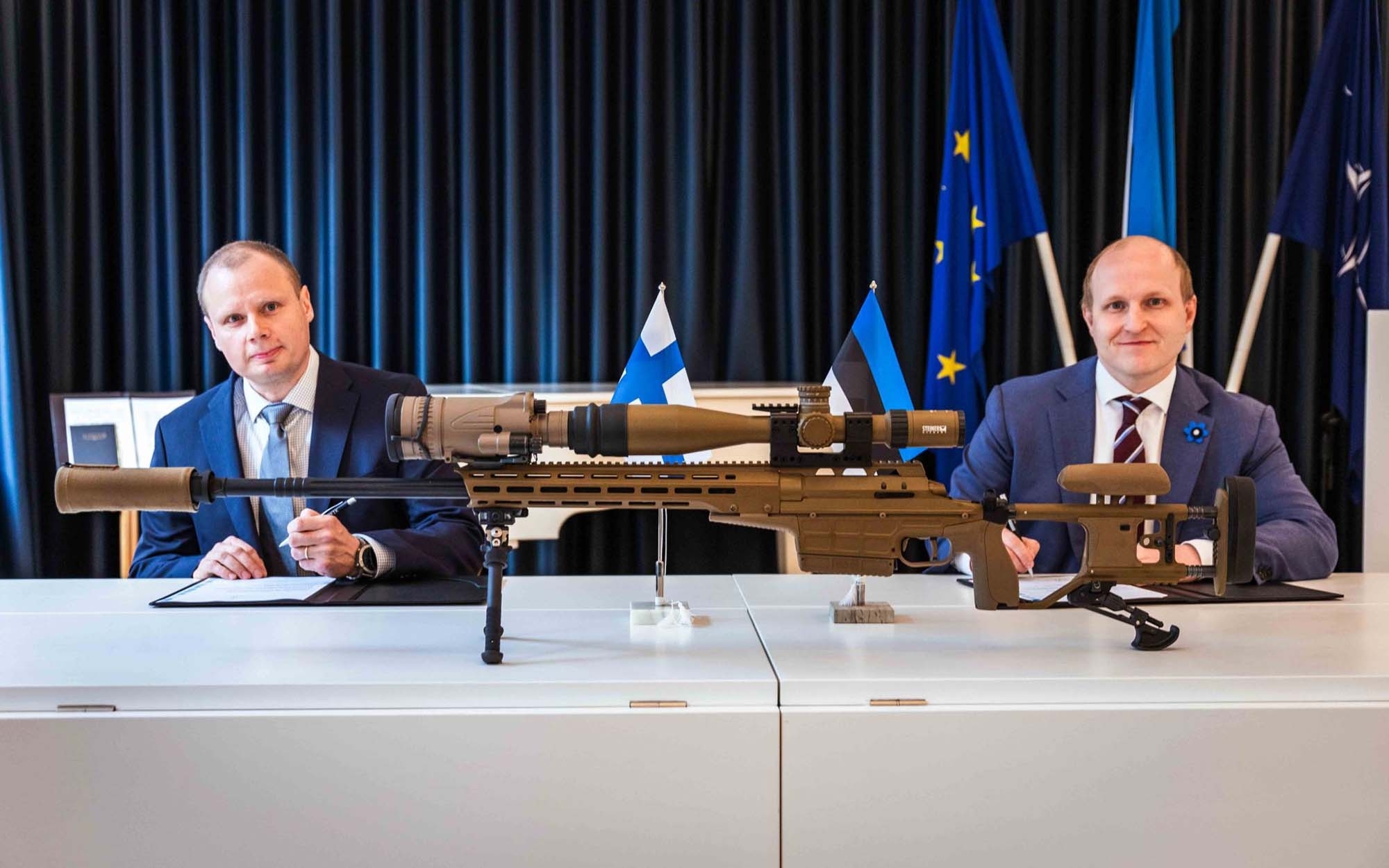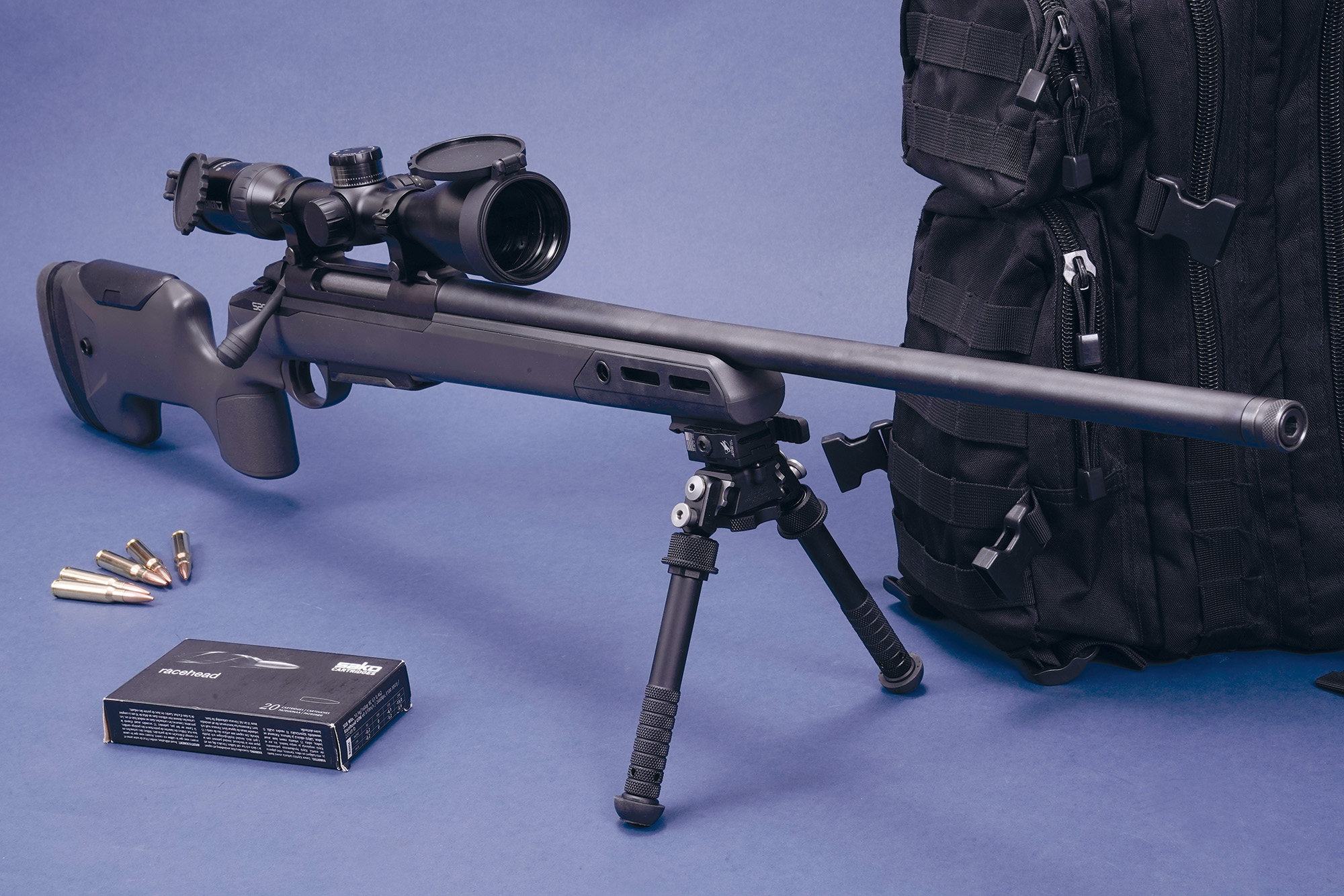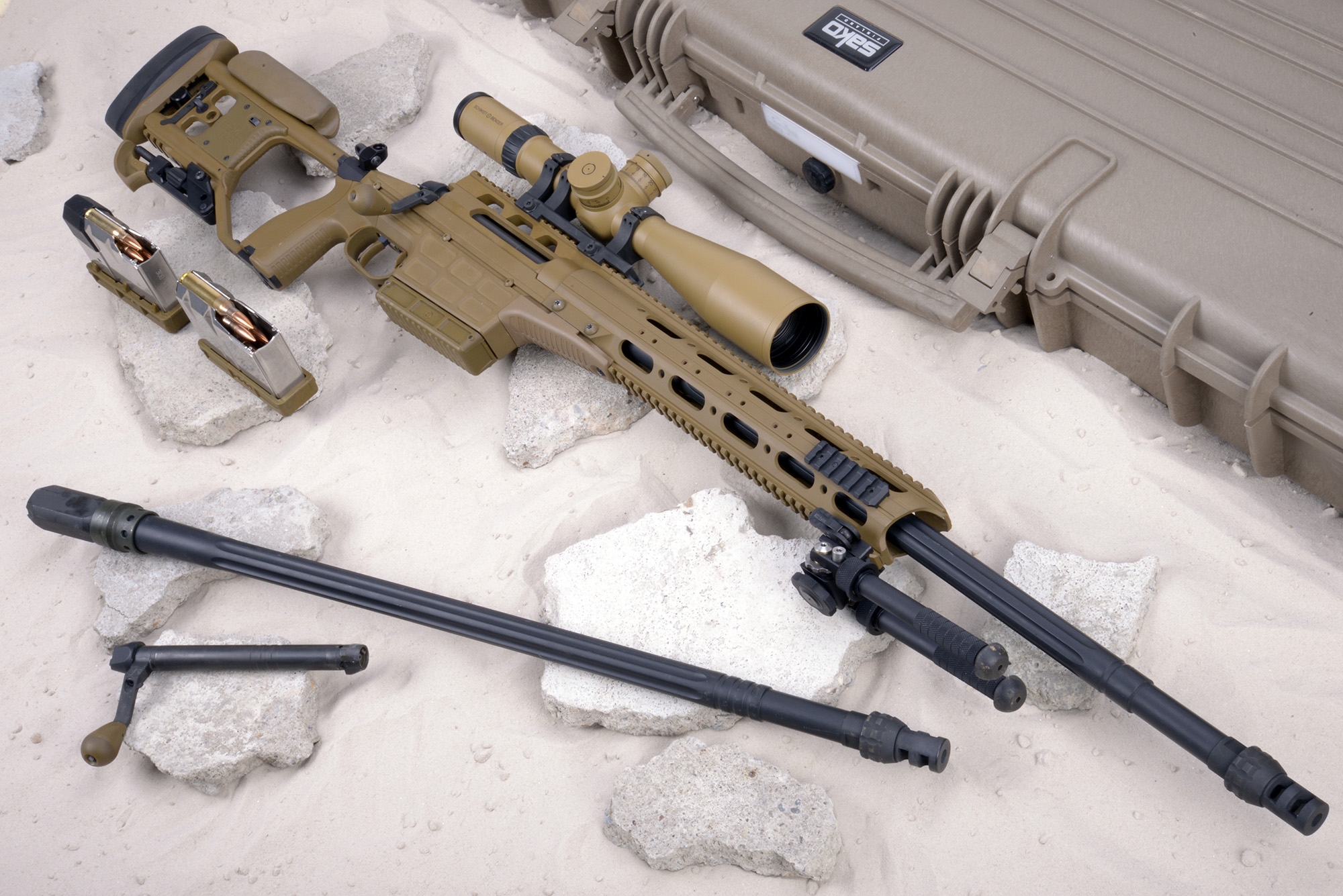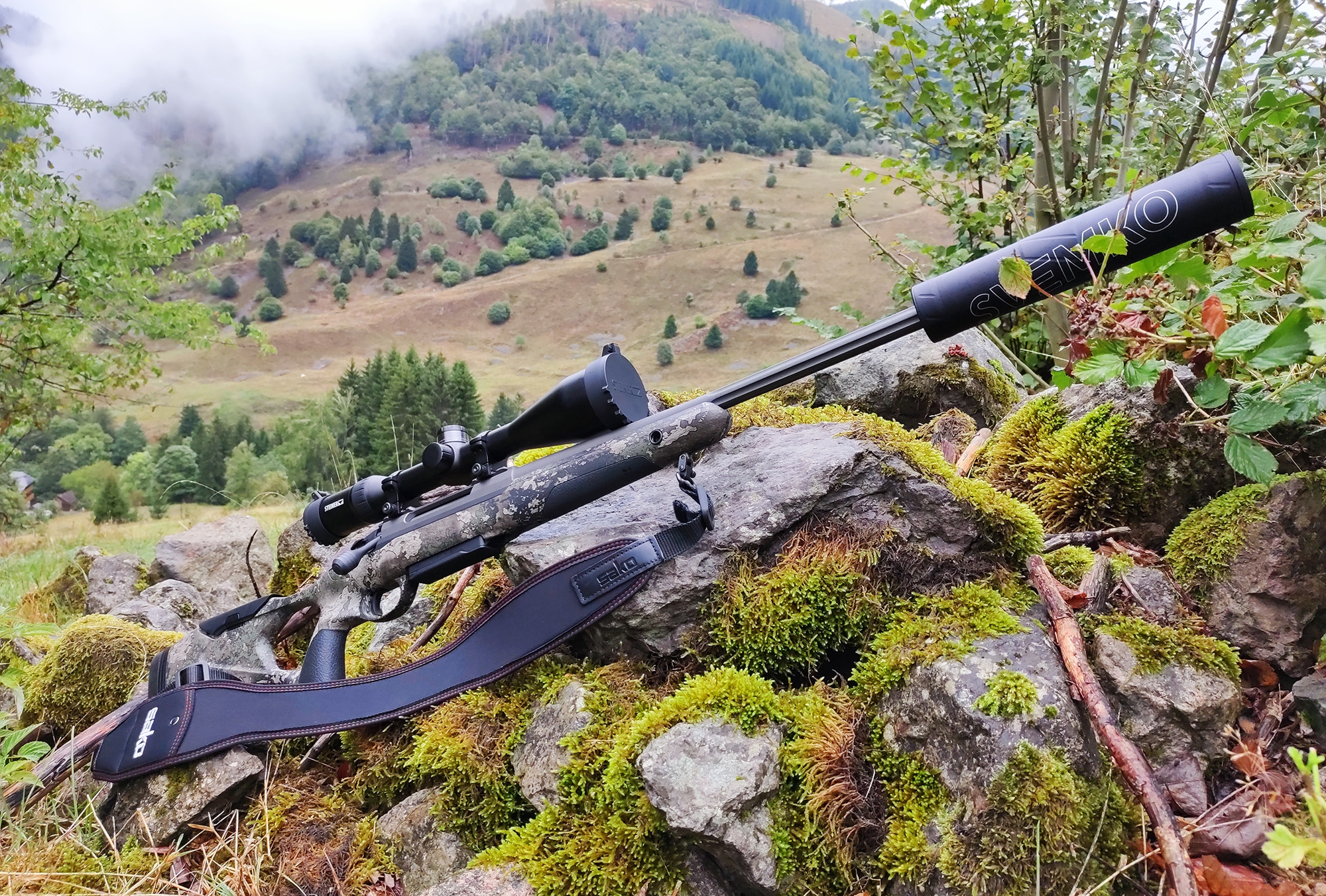With its almost 100 years of company history, the manufacturer Sako can now look back on an enormous range of products in firearms development and production. Today most parts, including the barrels, are manufactured in-house. Since the late 1980s, the company has also been producing its own ammunition, both for the civilian and law enforcement/military sectors. One of the best known Finnish models is the TRG 22 precision rifle, whose Magnum version is called TRG 42. And then there is also the TRG M10 – the sniper rifle for an originally purely law enforcement/military use, which was introduced nine years ago, is now also regularly available on the market.
The TRG M10 and the TRG 22 A1 differ only marginally at first glance, and one might think that the price premium of over 40 percent of the M10 compared to the 22 A1 is not justified.
The (small) differences to the top model Sako TRG M10
The TRG M10 is a multi-caliber capable precision rifle in the basic .308 Winchester and .338 Lapua Magnum calibers. In addition, the .300 Winchester Magnum caliber is offered as an interchangeable kit, consisting of barrel, bolt and magazine. In Riihimäki, the TRG 22 A1 is manufactured in 6,5 Creedmoor, .260 Remington and .308 of course, the TRG 42 A1 is available in .300 Win. Mag. and .338 Lapua Magnum. However, the multi-caliber conversion system of the M10 is not available. The multi-adjustable, folding stock is the same for both. But the handguards differ in the mounting interfaces. Sako uses fluted barrels on the M10 and a classic round outer profile on the 22 A1.
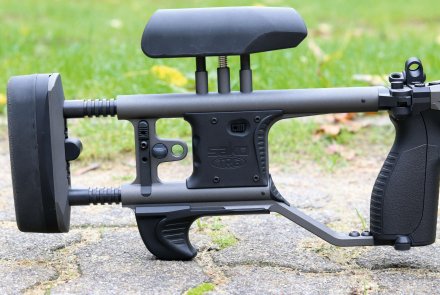
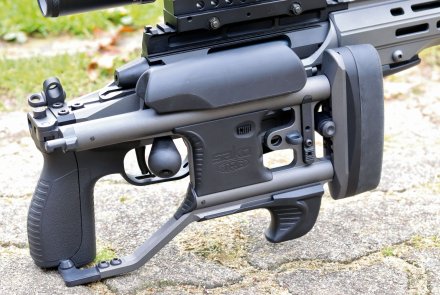
Stock and trigger of the Sako TRG 22 A1
Sako manufactures the chassis from an aluminum alloy, anodized and coated to protect against corrosion. An aluminum shroud screwed to the chassis is used to hold the front handguard. The double-stack magazine made of sheet steel holds 10 cartridges whose maximum length must not exceed 75 millimeters. This should be of particular interest to reloaders, as the maximum cartridge length of the 6.5 Creedmoor according to CIP is 71.76 mm. The skeletonized stock folds to the right of the receiver after the locking button is pressed in. The stock has a short Picatinny rail on the underside to accommodate a monopod or alternatively the supplied plastic grip. At the push of a button, the cheek rest can be adjusted in 12 steps by about 1.37”/35 millimeters in height. The butt plate is similar: it can be adjusted in 8 steps by 1.69”/43 millimeters in length. A further button allows the butt plate to be adjusted in six steps by 1.45”/37 millimeters in height. Sling attachments on both sides and QD interfaces on the folding stock and above the pistol grip round off the overall design. The aluminum handguard, which weighs just 18.7 oz/530 grams, is clamped to the chassis with two screws.
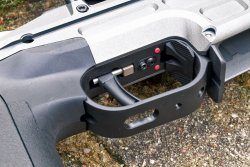
The handguard features a 13.7”/350 mm long Picatinny rail at 12 o'clock with a 30-MOA forward tilt. M-LOK cut-outs at the sides and bottom reduce the weight and allow for the attachment of accessories. The on-board tools are hidden in the small compartment in the stock, and a Torx key is on the bolt handle. The trigger assembly also comes from in-house production. The rifle offers a fully adjustable double-stage trigger, which can be removed from the receiver as a complete assembly. The trigger pull weight is adjustable from 1200 to 2100 grams. The trigger distance of the blade can also be adjusted. The safety, which can be operated from both sides, acts on the trigger and also blocks the bolt securely. Unfortunately, the safety mechanism on the test rifle was hardly noiseless, a disadvantage when used for hunting. By means of a button behind the bolt handle, the breech can be opened even when safety is on.
Barrel and bolt of the Sako TRG 22 A1 in detail
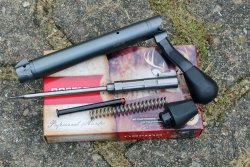
Both the barrel and the cold-forged receiver are protected from the weather by phosphating. The barrel with M18x1 thread has a diameter of 0.86”/22 mm on the front two thirds. Towards the chamber, however, the barrel diameter increases to 1.15”/29.4 mm. The receiver, which is rounded at the bottom, has a low-tolerance bedding.
Three screws connect the receiver to the chassis. The front screw additionally fixes a kind of recoil lug which engages exactly in the corresponding recess. A 6.7”/170 mm long Picatinny rail with a 30-MOA forward tilt is enthroned on the receiver top. A prism rail (0.62”/16 mm) is also inconspicuously integrated into the receiver for direct mounting of scope rings or the like. The bolt locks into the receiver with three lugs. Even smaller components such as the ejector pin and the extractor claw make a very well finished impression.
The 6.5 Creedmoor long range cartridge
The US manufacturer Hornady, known for reloading equipment, components and ammunition, developed the 6.5 caliber 13 years ago. The cartridge case is based on a shortened .30 TC one, which is very close to that of the .308 Winchester case. This means that it has almost the same bolt face diameter, and a conversion from .308 rifles to the 6.5 Creedmoor is possible by simply swapping the barrel. The cartridge was developed as a long-range caliber for hunting as well as for sports shooting. By using medium-fast powders and standard primers, the 6.5 mm bullets, which are available in a wide range, can be used to produce very fast - and therefore not susceptible to wind – loads. In addition, the usual twist rate of 1:8" (204 mm) prefers bullets that have a high and thus favorable cross-sectional area in conjunction with the high velocities. Even at a range of 1000 meters, velocities in the supersonic range can thus be easily achieved. This is why the lightweight cartridge, with its light recoil and long range, is not only of interest to hunters and sports shooters, but is also attracting increasing interest from law enforcement agencies and the military.
On the shooting range with the Sako TRG 22 A1
For the big test of the TRG 22 A1 we went to an open shooting range that allowed ranges of up to 800 meters. The weather god was once again gracious and provided for slightly cloudy weather with almost 20°C and hardly any wind – the best conditions. Shooting was done at three ranges (100, 300 and 800 meters), up to 300 meters on paper. At 800 meters, the testers placed a Silver Mountain Targets electronic hit display. The system, which communicates via WLAN, records the projectiles passing at supersonic velocity using four sound pressure sensors on the target and thus calculates the hit position. Velocity at target is also recorded. Muzzle velocity was determined using a LabRadar at all shooting ranges. The Sako swallowed all 10 types of ammunition tested similarly well. There were no noteworthy flyers, neither with the match loads nor the hunting cartridges. On the 100-m short range, the Norma Match scored best with a 130-grain HPBT bullet. At 300 meters the RWS Target Elite Plus was in front with 130 grains and at the 800-meter range the Sako TRG Precision with a 136-gr Scenar L bullet. In the hunting ammunition category, the Sako Gamehead Pro Tipped (with 130-gr GameKing bullet) won, and at 300 meters the Hornady cartridge with a 143-grain ELD-X bullet was the winner. Unfortunately, the available shooting time ended before the end of the whole test, so that the 4 hunting loads could no longer be tested at 800 meters.
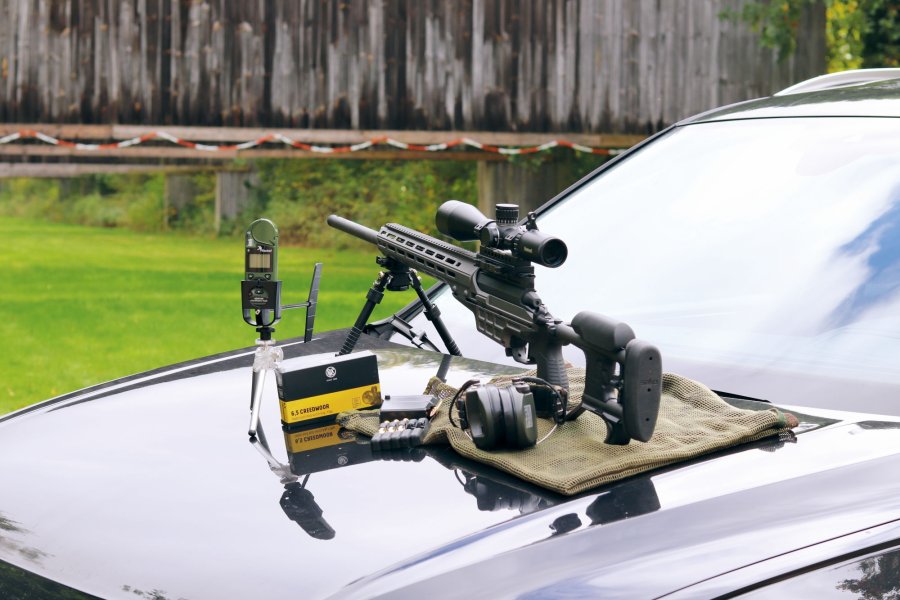
Sako TRG 22 A1: test conclusion
The Sako TRG 22 A1 in 6.5 Creedmoor caliber is a well-manufactured precision bolt-action rifle, which is optimally suited for long range shooting thanks to its caliber. But the rifle is also suitable for hunting. Thanks to the folding stock, it is easy to store, and its versatile adjustment possibilities allow it to be adapted to the shooter. The shooting performance and shooting behavior are great. A small drop of bitterness is only the high price of 7575 euro which has to be paid for such an effective rifle.
Text: Daniel Lang and Hamza Malalla
You can find more information about Sako firearms on the Sako wesite.



